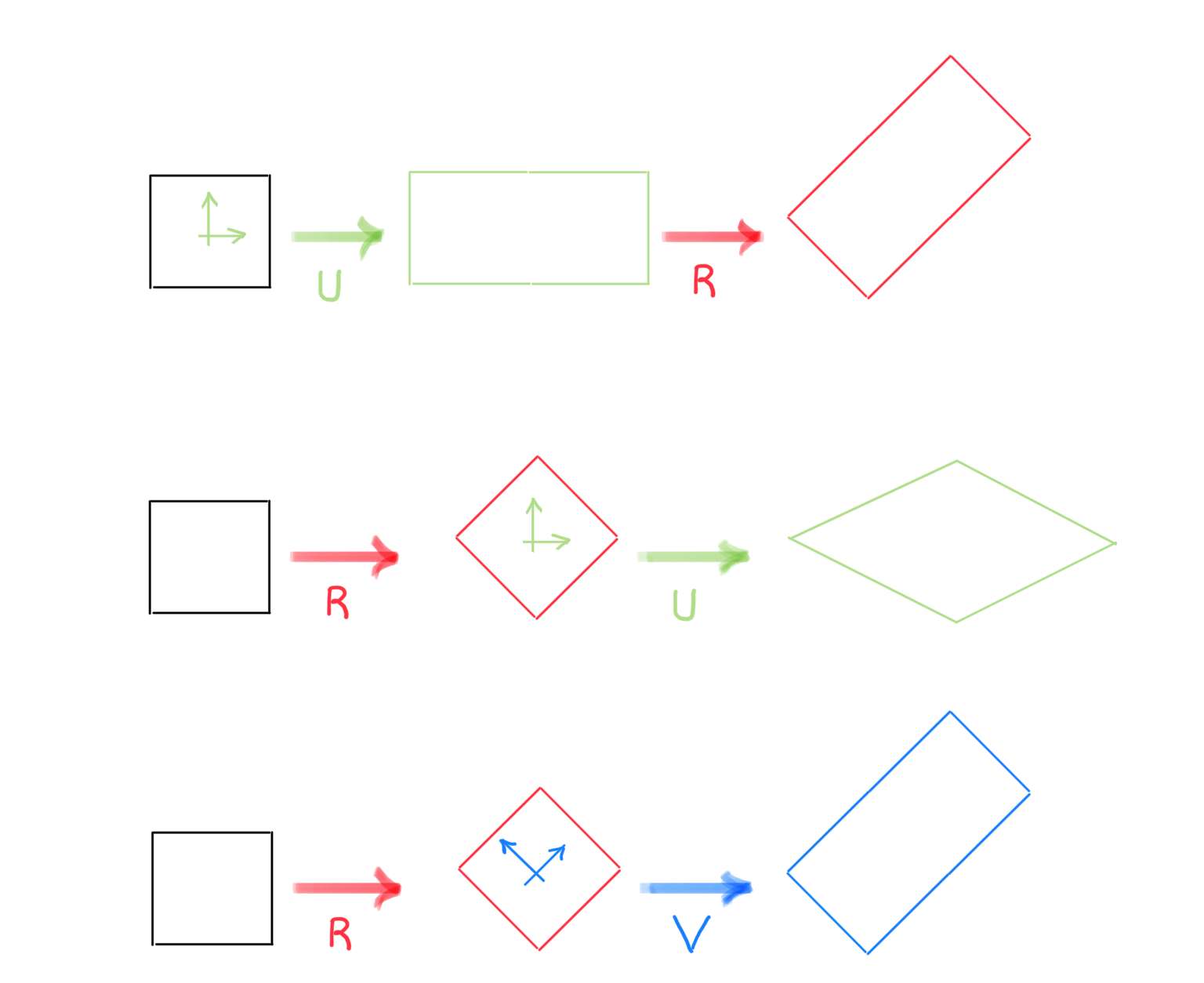Section 1.6 polar decomposition
The possibility that a given linear transformation may be the result of the composition of several linear transformations and the physical consideration that the motion of a body is made up of elementary transformations such as rotation and pure deformation, lead to the following fundamental result.
polar decomposition theorem.
Given the deformation gradient \(\func{\tens{F}}{\vec{X}}\text{,}\) there is a single polar decomposition at each point defined as follows
\(\tens{R}\) is the rotation tensor, then an orthogonal proper tensor, which satisfies the relationship
\(\tens{U}\) and \(\tens{V}\) are the right stretch tensor and the left stretch tensor, rispectively. These tensors are unique, positive definite and symmetric. Positive definiteness imposes that for any vector \(\vec{v} \neq \vec0\) the satisfaction of the following property
while symmetry implies
Remark 1.6.1.
The application of the right polar decomposition to (1.3.9) furnishes
which shows how the vector \(d\vec{X}\) is first stretched and after rotated. By applying the left polar decomposition it is obtained
to be interpreted as a deformation sequence of \(d\vec{X}\) followed by a rotation. What has been said is illustrated by the following figure. 
The polar decomposition theorem therefore captures the elementary transformations, rotation and pure deformation, which make up \(\tens{F}\) and highlights the non-commutativity of the two transformations. Furthermore, if \(\tens{R} = \tens{I}\) and therefore \(\tens{F}=\tens{U} = \tens{V}\) the transformation, in the point considered, it is a pure deformation. Conversely, if \(\tens{U} = \tens{I} = \tens{V} \) and therefore \(\tens{F} = \tens{R}\text{,}\) the transformation it is a rigid rotation at the point considered.
Remark 1.6.3. rotation tensors.
We have already repeatedly encountered the 2D tensor related to a counterclockwise rotation of \(90^o\) which in matrix terms has the following expression
It is easy for such a tensor to verify the following properties
The listed properties are not specific to the particular tensor considered but are satisfied by all the rotation tensors, whatever the size of the rotation angle. In order to verify this, consider the linear transformation that rotates an assigned vector \(\vec{X}\) by a generic angle \(\theta\text{.}\)
As shown in the previous video, the following result can be stated
It is easy to verify that
properties which define a proper orthogonal tensors. The condition just written allow to obtain
relationship confirming the fact that the change in volume can only be linked to \(\tens{U}\text{.}\) It is also easy to verify that
Remark 1.6.4. positive definite tensors.
If a symmetric tensor \(\tens{T}\) satisfies the condition
then we say the tensor positive definite. From a geometric point of view, this condition can be easily interpreted as follows: each time the linear transformation \(\tens{T} \) is applied to any non-zero vector, the vector \(\tens{T}\vec{v}\) obtained in this way forms an angle lower than \(\pi/2 \) with respect the starting vector \(\vec{v}\text{,}\) a condition which has however very often a precise physical meaning.
On the condition of positivity, further information and insight will be provided when eigenvalues and eigenvectors will be discussed.
